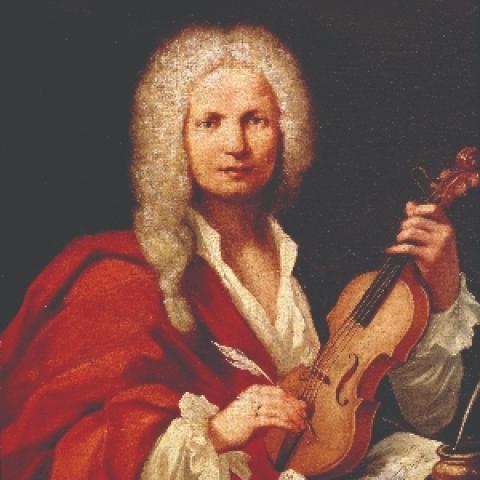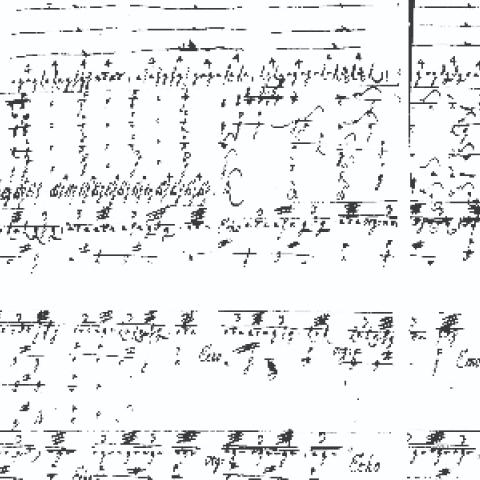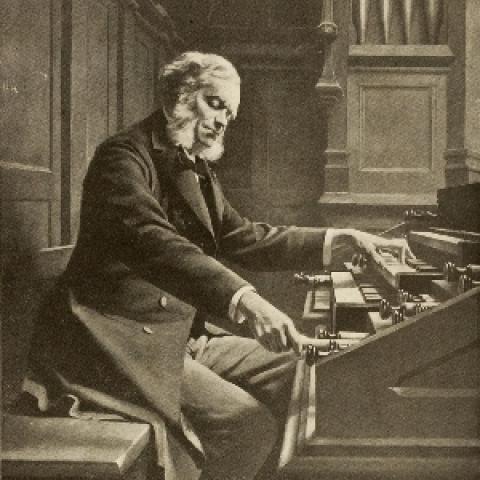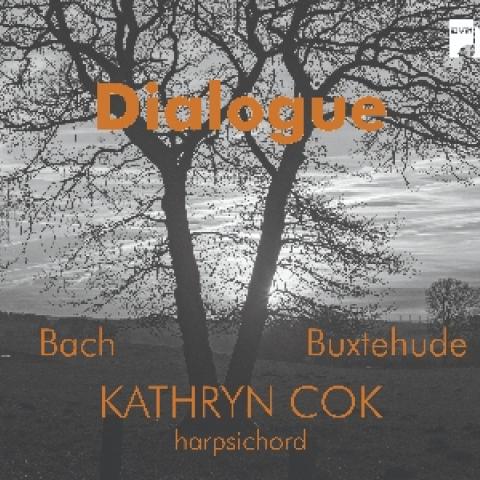Marilyn Biery is keyboard acquisitions editor at Augsburg Fortress. She is Bridge Director of Music Ministry at Kirk in the Hills in Bloomfield Hills, Michigan. She holds bachelor and master of music degrees in organ performance from Northwestern University, Evanston, Illinois, and the Doctor of Musical Arts degree in organ performance from the University of Minnesota, Minneapolis.
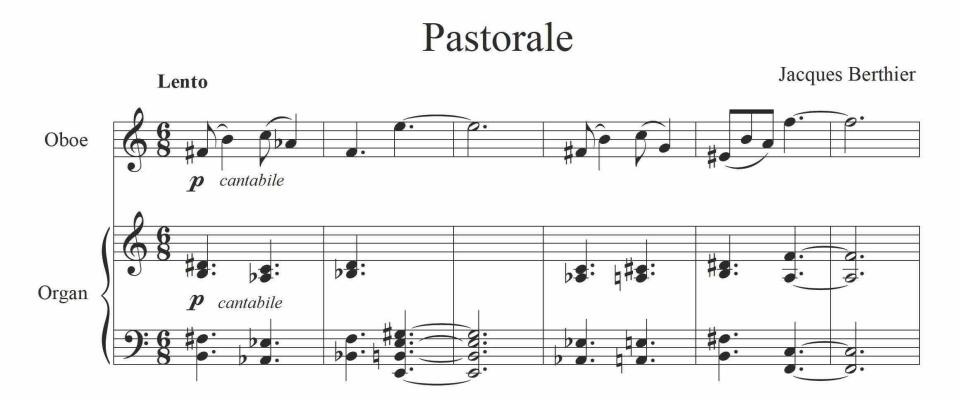
One of my great delights as a church musician is getting to work with instrumentalists—amateurs, professionals, and students. Therefore, I am always on the lookout for music for them. When I have someone coming to play an obbligato for a work with the choir, I search for repertoire for them to play for preludes or postludes. I discovered that there is a wealth of material available for violin and flute, but not as much for the oboe, particularly for oboe and organ.
Six years ago, I made the acquaintance of Stephanie Shapiro of Ann Arbor, Michigan, who is currently on the faculty at Wayne State University in Detroit as well as the principal oboist for the Lansing Symphony. Since then, Stephanie and I have become devoted friends as well as musical collaborators—we have played numerous concerts and worship services together, and we have found a wealth of repertoire for oboe and organ as well as some pieces for English horn and organ.
During the pandemic, when we were isolated, it occurred to me that there might be music on the International Music Score Library Project (IMSLP) site (imslp.org) that we could transcribe for publication. A year later we had so much music compiled that we decided to split it into separate volumes. We are currently finishing our second volume, and the third has been sketched out. In 2021 GIA Publications published our first collection: Melodies for Two: Music for Oboe, Violin, or Flute, and Organ or Piano, Book One, Composers of Scandinavia, edited by Stephanie Shapiro and Marilyn Biery.
This article will list and briefly discuss the repertoire that we found that was already available and then list and discuss the repertoire in Melodies for Two. For purposes of brevity, I will limit the list to pieces we have either played or rehearsed enough to be able to speak about effectively.
Jacques Berthier (1923–1994): Pastorale, GIA Publications (1987). This lovely pastorale was written for Sherri Batastini, the daughter of Robert Batastini, retired vice president and senior editor at GIA Publications. Sherri was fifteen at the time and already proficient enough to play this piece. Jacques Berthier (1923–1994) was a French composer who wrote most of the liturgical music used at Taizé. Pastorale is in ABA form—two pages of score with a repeat for the A section. The language is modern but very listenable. Of moderate difficulty, it is not hard, but there are numerous accidentals, and the B (“animato”) section has sixteenth-note patterns and wide skips for the oboe. (Examples 1a and 1b.)
Marguerite Roesgen-Champion (1894–1976): Berceuse pour l’enfant Jésus pour Hautbois et Orgue (1956), befoco music; Deux Nocturnes pour hautbois et piano (or orgue), Alphonse Leduc (1950). Berceuse is a perfect lullaby for Christmas Eve or Day, another ABA form with repeat using gentle chromaticism. The first of the Deux Nocturnes is our absolute favorite of all the pieces we discovered, due to the composer’s rich sonorities—fabulous on the 8′ foundations, especially if you add 16′ ad lib pedal. Each piece is about four minutes long, and they make wonderful choices for concert or worship. Roesgen-Champion was a Swiss-born composer who spent much of her life in Paris. These works are of moderate difficulty.
Max Reger (1873–1916): Canzone für Oboe und Orgel, opus 65, number 9, befoco music. Compared to other Reger pieces, this one is not too difficult, but unfortunately our score is missing the last page. Efforts to obtain a score without the defect were not successful. We read it through, and I liked what I saw, but we decided not to pursue it. Canzone is a transcription of a solo organ work, with the oboe taking the top voice; sections with thicker (typical Reger) texture are played by the organ alone. The transcription was done for befoco by Markus Ewald and is of medium difficulty.
Josef Rheinberger (1839–1901): Andante Pastorale und Rhapsodie für Oboe und Orgel, edited by Klaus Hofmann for Carus. “Andante Pastorale” is from “Intermezzo” of the Sonata in A Minor for organ; “Rhapsodie” is from “Andante” of the Sonata in F Minor for organ. This is typical Rheinberger writing. “Andante Pastorale” is another of our favorites; “Rhapsodie” is more challenging. The two make a good set for concert programming and are medium to difficult.
Jan Koetsier (1911–2006): Partita pour Corno Inglese e Organo Manualiter, opus 41, number 1, was published in 1954 by Muziekgroep Nederland, Donemus, Amsterdam. This piece is in five short movements, and some of these could be used individually. The fourth movement is a two-page organ solo that is followed by the last movement, in which the oboe plays Wie schön leuchtet der Morgenstern. Koetsier was a Dutch composer and conductor. This music is of moderate to medium difficulty.
Henk Badings (1907–1987): Canzona per Oboe ed Organo was published in 1938 by Donemus, Amsterdam. The score is in manuscript form but is clear and readable—about five minutes long. We loved it, but the ending is a bit inconclusive, and we programmed it as the ending of the first half of our recent concert, which left the audience a bit puzzled as to whether it had ended (we were not visible). Badings was an Indo-Dutch composer, and his harmonic language evokes shades of Paul Hindemith. This is medium to difficult.
Piotr Grinholc (b. 1966): Toccata na obój I organy (2010) is available on IMSLP. This piece is great for ending a concert of oboe and organ works. It has brilliant toccata-like passages for the organ, with a lyrical middle section. My efforts to contact him were unsuccessful—we wanted to let him know how much we enjoyed this piece. Grinholc is a Polish organist and sound engineer from Warsaw, Poland. This work is difficult.
Philip Orem (b. 1959): After Reading Mary Oliver—A Suite for Oboe and Organ (2016) and Lullaby for a Bull Moose for English Horn and Organ (2016) are available from the composer: https://po4musik.wixsite.com/website. Lullaby is a delightful little ode to my favorite animal, the moose, a nod to fun and silliness (Example 2). Orem is a graduate of Northwestern University with degrees in piano performance. These works are easy to medium in difficulty.
Daniel Pinkham (1923–2006): The Seven Days, Divertimento for Oboe and Organ, 2002, is published by ECS Publishing: “Flowing,” “Serene,” “Quick,” “Pensive,” “Questions and Answers,” and “Playful Quickstep.” Playing time for this set is about twelve minutes—we have performed it several times, sometimes excerpting some of the movements for a shorter set. The movements are of medium difficulty.
David Evan Thomas: Psalm and Dance (2007) for flute and organ is found in The Minnesota Organ Book: New Music for Organ and Solo Instruments, published by Augsburg Fortress. This piece was commissioned by the American Guild of Organists for its national convention in Minneapolis in 2008 (Example 3). It is equally playable on the oboe with only a few minor adjustments. Thomas is a Minneapolis composer whose organ works are published by Augsburg Fortress. This work is medium to difficult.
James Hopkins: Partita on Cranham for Oboe and Organ (2002) is published by E. C. Schirmer. This piece is trickier than the Pinkham, but well worth learning. It was commissioned for the twenty-second annual Baroque Music Festival in Corona del Mar, Burton Karson, artistic director, by Jerry and Roberta Dauderman. If you know James Hopkins’s organ writing, you will see the same characteristics in this piece—innovative writing with colorful and unique organ registrations. This is medium to difficult.
Calvin Hampton (1938–1984): Variations on Amazing Grace for English Horn and Organ is published by Wayne Leupold Editions. Stephanie and I have looked at this piece several times, but we have not performed it. It is a concert piece with ten variations—we simply have not had the opportunity to program it. The variations flow into one another, so taking one or two out to play would not really be an option for worship. Still, this is worth looking at, especially for lovers of Hampton’s music. The music is difficult.
Melodies for Two: Music for Oboe, Violin, or Flute, and Organ or Piano, Book One, Composers of Scandinavia, edited by Stephanie Shapiro and Marilyn Biery. This book presents works of composers from the nineteenth and early twentieth centuries. Some are household names, such as Grieg and Sibelius, while others are not well known—Laura Netzel, Amanda Röntgen-Maier, and Elfrida Andrée. Some selections were composed for solo piano (Grieg, Sibelius), others were composed for oboe and piano (Carl Nielsen), one for vocalist and piano (Netzel, Ave Maria); the rest were written for violin and piano (Röntgen-Maier, Andrée, Frederik Matthison-Hansen, Netzel). We included parts for flute and violin, which are available as a free download with the purchase of each book.
My paternal grandmother emigrated from Sweden in the early part of the 1900s. My father always loved anything Scandinavian. When I was searching for music to transcribe, the piano pieces of Edvard Grieg (1843–1907) came to mind, and I found four pieces that work beautifully for oboe and organ: “Elegie,” opus 38, number 6; “Elegie,” opus 47, number 7; “Grandmother’s Menuet,” opus 68, number 2 (Example 4, page 15); and “In der Heimat,” opus 43, number 3. These are easy to moderate in difficulty.
Jean Sibelius (1865–1957): Another transcription from a piano piece is Impromptu Number 6 in E Major, opus 5, by Sibelius, a Finnish composer and violinist, widely regarded as his country’s greatest composer. His seven symphonies are regularly performed in his home country and internationally. Some of his works were inspired by nature, some by Nordic mythology. This example is moderately difficult (Example 5, page 15).
Frederik Matthison-Hansen (1868–1933) was a Danish organist and composer who came from a musical family, as his father, grandfather, and uncle were all organists and composers. His father and uncle were his first teachers. He worked as an organist and singing teacher—most of his music was written for the church. His Cantilena makes a perfect prelude for any level player—easy enough for a student and well worth playing for a professional. It is easy to medium.
Carl Nielsen (1865–1931): Fantasistykker, opus 2, consisting of “Romance” and “Humoresque,” was written for oboe and piano, and it makes for a wonderful transcription for organ. Nielsen was a Danish composer, conductor, and violinist, considered to be one of his country’s most prominent composers. He attended the Royal Danish Academy of Music, after which he became a second violinist in the Royal Danish Orchestra, a position he held for sixteen years. In 1916 he began teaching at the Royal Danish Academy, a post he held until his death. The movements are medium to difficult.
Three Swedish women are featured in this collection: Elfrida Andrée (1841–1929), Laura Netzel (1839–1927), and Amanda Röntgen-Maier (1853–1894). Andrée, an organist, conductor, and composer, was the first woman to graduate in organ studies (1860) from the Royal College of Music in Stockholm, where she also studied composition. She was the first woman appointed a cathedral organist in Sweden. Her position as organist at Gothenburg Cathedral began in 1867 and continued until her death. She was active in the Swedish women’s movement and worked to bring about the revision of a law to allow women to hold the position of organist in Sweden. We included her Två Romanser (“Larghetto” and “Allegro”) in the volume, works that are medium to difficult.
Netzel, a composer, pianist, conductor, and concert arranger, was born in Finland into the family of Georg Fredrik Pistolekors, a nobleman and high-ranking civil servant. Her mother died a few months after her birth, and the family moved to Stockholm shortly thereafter. It was not considered proper for high-born ladies to seek a career as a musician, so she studied piano and voice privately. She studied composition with Wilhelm Heintze in Stockholm and Charles-Marie Widor in Paris, where many of her works were published and performed. Like many other women of her time, she wrote under a pseudonym, “N. Lago.” She was active in social causes, supporting poor women, children, and workers.
We included four of Netzel’s pieces in this book. Three were originally for violin and piano: Andante Religioso, opus 48; Berceuse, opus 28; and Tarantelle, opus 33 (Example 6); the fourth, Ave, Maria, opus 41, was written for voice and piano. These pieces are medium to difficult.
Röntgen-Maier, a violinist and composer, was the first woman to graduate with a degree in music direction from the Royal College of Music (1872), where she also studied violin, organ, piano, cello, composition, and harmony. She continued her composition and violin studies in Leipzig, where she met and married the composer Julius Engelbert Röntgen, the son of her violin teacher in Leipzig. The marriage ended her performing career, but she continued to compose. She contracted tuberculosis in 1887 and died at the age of forty-one. We included two movements from her set Six Pieces for Violin and Piano, “Allegretto con moto,” and “Tranquillamente” (Example 7). These are of moderate difficulty.
§
Our second collection of Melodies for Two includes music of the Baroque and Classical periods. There are instrumental parts for oboe, flute, and cello/continuo. These pieces have the degree of difficulty that you would expect of pieces from the Baroque and Classical periods.
• “Siciliano,” from Flute Sonata in E-Flat Major, H. 545, by Carl Philipp Emanuel Bach (formerly attributed to J. S. Bach as BWV 1031);
• Air in E-flat Major, attributed to Johann Christian Bach;
• “Allegretto” and “Andante grazioso,” from Violin Sonata in G Major, opus 16, number 2, by Johann Christian Bach;
• Ich steh mit einem Fuß im Grabe, BWV 156, by Johann Sebastian Bach;
• Sinfonia/Arioso, from Orchestral Suite Number 3 in D Major, BWV 1068, by Johann Sebastian Bach;
• Fantasia in F Minor for Oboe and Organ, Krebs-WV 604, by Johann Ludwig Krebs (transposed from the
original key);
• Violin Sonata in G Minor, HWV 364a, opus 1, number 6, by George Frideric Handel;
• “Andante,” from Oboe Concerto in C Major, attributed to Joseph Haydn/Ignaz Malzat;
• “Largo,” “Presto-Tempo giusto-Presto,” “Andante,” and “Allegro,” from Sonata for Oboe and Continuo, TWV 41g6, by Georg Philipp Telemann, from Tafelmusik, part 3.
There is a wealth of music available to transcribe. We will continue doing so—the third volume is in initial stages and includes nineteenth- and early twentieth-century music from Central Europe.


